
Puno Region: The Gateway to Lake Titicaca and Andean Mysticism
Discover the Puno Region in Peru: Where Andean culture, ancient history, and the breathtaking Lake Titicaca create an unforgettable travel experience.
Nestled in the highlands of southeastern Peru, the Puno Region is a place where ancient traditions meet breathtaking natural beauty. This region is best known for its proximity to Lake Titicaca, the highest navigable lake in the world. The lake is dotted with unique floating islands made from totora reeds, home to the indigenous Uros people who have preserved their way of life for centuries. Visitors can explore these islands and learn about the fascinating culture and history directly from the inhabitants. Beyond Lake Titicaca, Puno itself is a vibrant town that bursts into life every February during the Fiesta de la Candelaria, one of South America's largest festivals. Here, you can witness colorful parades, traditional dances, and live music that reflect the rich cultural tapestry of the Andean people. The town is also an excellent base for exploring the surrounding archaeological sites, such as Sillustani, where ancient funerary towers known as chullpas stand as silent sentinels of a bygone era. The Puno Region offers more than just historical and cultural experiences. The natural landscapes are stunning, with rolling hills, terraced fields, and clear blue skies. Whether you choose to hike through these scenic vistas, take a boat ride on the lake, or simply relax and soak in the serene atmosphere, Puno offers something for every type of traveler. The region's high altitude adds a unique twist to the adventure, making every moment here feel like a journey through time and space.
Local tips in Puno Region
- Acclimatize: Puno is at a high altitude. Spend a day acclimatizing to avoid altitude sickness.
- Local Markets: Visit the local markets for authentic handicrafts and souvenirs.
- Early Tours: Start lake tours early in the morning to avoid the afternoon winds.
- Warm Clothing: Pack warm clothing, as temperatures can drop significantly at night.
- Currency: Carry small denominations of Peruvian Soles for easier transactions.
Puno Region: The Gateway to Lake Titicaca and Andean Mysticism
Nestled in the highlands of southeastern Peru, the Puno Region is a place where ancient traditions meet breathtaking natural beauty. This region is best known for its proximity to Lake Titicaca, the highest navigable lake in the world. The lake is dotted with unique floating islands made from totora reeds, home to the indigenous Uros people who have preserved their way of life for centuries. Visitors can explore these islands and learn about the fascinating culture and history directly from the inhabitants. Beyond Lake Titicaca, Puno itself is a vibrant town that bursts into life every February during the Fiesta de la Candelaria, one of South America's largest festivals. Here, you can witness colorful parades, traditional dances, and live music that reflect the rich cultural tapestry of the Andean people. The town is also an excellent base for exploring the surrounding archaeological sites, such as Sillustani, where ancient funerary towers known as chullpas stand as silent sentinels of a bygone era. The Puno Region offers more than just historical and cultural experiences. The natural landscapes are stunning, with rolling hills, terraced fields, and clear blue skies. Whether you choose to hike through these scenic vistas, take a boat ride on the lake, or simply relax and soak in the serene atmosphere, Puno offers something for every type of traveler. The region's high altitude adds a unique twist to the adventure, making every moment here feel like a journey through time and space.
When is the best time to go to Puno Region?
Iconic landmarks you can’t miss
Plaza Mayor de Puno
Experience the vibrant heart of Puno at Plaza Mayor, a picturesque square filled with culture, dining, and unique Peruvian charm.

Pino Park
Experience tranquility and natural beauty at Pino Park in Puno, a serene escape with lush landscapes and cultural significance.

Mirador Puma de Puno
Experience stunning views of Lake Titicaca at Mirador Puma de Puno, your gateway to breathtaking landscapes and vibrant local culture in Peru.

Arco Deustua
Explore the historic Arco Deustua in Puno, a stunning archway celebrating local heritage and a vibrant cultural hub for tourists.

Casa Andina Premium Puno
Experience serene luxury at Casa Andina Premium Puno, the ideal hotel for discovering the beauty of Lake Titicaca and Peruvian culture.

Casa Andina Standard Puno
Experience the charm of Puno at Casa Andina Standard Puno, your ideal hotel for exploring Lake Titicaca and its vibrant local culture.

Puno Cathedral
Discover the architectural beauty and spiritual significance of Puno Cathedral, a must-see landmark in the heart of Puno, Peru.

Coca Museum & Custumes
Discover the cultural significance of coca leaves at the Coca Museum & Costumes in Puno, a captivating journey through Peruvian heritage.

Complejo Turístico Flotante UROS TITICACA KURMI LAGO TITICACA PERÚ
Experience the unique culture and stunning beauty of Uros Titicaca Kurmi, a floating island resort on Lake Titicaca, Peru.
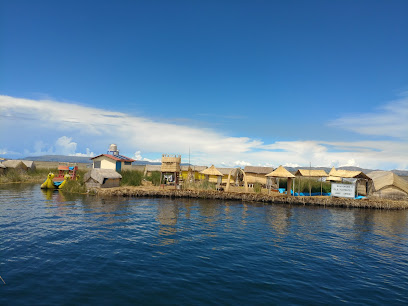
Yavari
Explore the Yavari Museum in Puno, where maritime heritage and rich history of Lake Titicaca come alive in a captivating experience.

Islas de Los Uros
Discover the enchanting Islas de Los Uros, a captivating floating island community on Lake Titicaca, rich in culture and breathtaking scenery.

Faro Titicaca Puno
Explore Faro Titicaca in Puno, a stunning historical landmark offering breathtaking views of Lake Titicaca and a glimpse into Peru's rich maritime heritage.

BALCON DEL CONDE DE LEMOS
Discover Balcon del Conde de Lemos, a historical site in Puno offering stunning views of Lake Titicaca and a glimpse into Peru's rich heritage.

Pichurata Jankolaka
Explore the beauty and cultural richness of Pichurata Jankolaka, a perfect tourist attraction near Puno, Peru.

Unmissable attractions to see
Plaza de Armas
Experience the vibrant heart of Juliaca at Plaza de Armas, where culture meets community in a picturesque urban setting.

Sillustani
Explore Sillustani, an ancient archaeological site featuring towering burial structures and stunning views of Lake Umayo in Peru's captivating landscape.
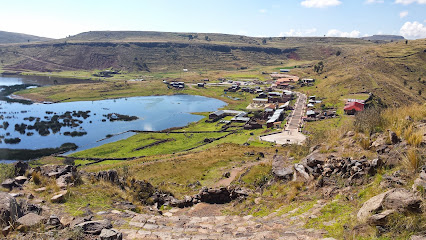
Reserva Nacional Titicaca
Explore the breathtaking landscapes and rich biodiversity of Reserva Nacional Titicaca, a gem of Peru's natural heritage and cultural richness.

Mirador Puma de Puno
Experience stunning panoramic views of Puno and Lake Titicaca from the breathtaking Mirador Puma de Puno, a must-visit destination for all travelers.

Inca Uyo
Explore Inca Uyo, the remarkable archaeological site in Chucuito, Peru, and uncover the rich history of the Inca civilization amidst breathtaking landscapes.

Mirador El Condor
Experience breathtaking views of Lake Titicaca and the Andes at Mirador El Condor, a must-visit tourist attraction in Puno, Peru.

Typical Arc of Taquile
Experience the captivating culture and breathtaking views of Taquile Island, a hidden gem in Lake Titicaca, Peru.

Arco Deustua
Explore Arco Deustua, a historical arch in Puno, Peru, showcasing stunning architecture and rich cultural heritage.

Cafe Bar de la Casa del Corregidor
Immerse yourself in Puno's history at Café Bar de la Casa del Corregidor, where great food meets a rich cultural heritage.

Aramu Muru
Discover the mystical Aramu Muru, an archaeological wonder in Peru filled with ancient lore and breathtaking landscapes.

Coca Museum & Custumes
Explore the rich cultural heritage of Peru at the Coca Museum & Costumes, where history and tradition come alive through engaging exhibits.

Iglesia de San Juan Bautista - Puno, Santuario de la Virgen de la Candelaria.
Discover the spiritual heart of Puno at the Iglesia de San Juan Bautista, a stunning shrine filled with cultural heritage and vibrant traditions.

Complejo Turístico Flotante UROS TITICACA KURMI LAGO TITICACA PERÚ
Experience the unique culture and breathtaking beauty of the Uros Islands at Uros Titicaca Kurmi, a floating resort on Lake Titicaca.

Parque De La Wawita
Explore the beauty and tranquility of Parque De La Wawita in Juliaca, a perfect retreat for nature lovers and cultural enthusiasts alike.

Isla los Uros Lago mayor
Discover Isla los Uros, a floating island rich in culture and tradition on Lake Titicaca, offering unique experiences and breathtaking natural beauty.

Essential places to dine
Mojsa Restaurant
Discover authentic Peruvian cuisine at Mojsa Restaurant in Puno – a culinary delight that embodies tradition and innovation.
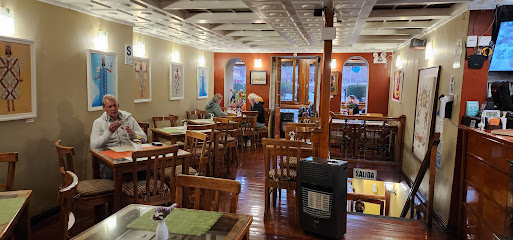
La Casona Restaurant
Experience authentic Peruvian cuisine at La Casona Restaurant in Puno – where tradition meets flavor in every dish.
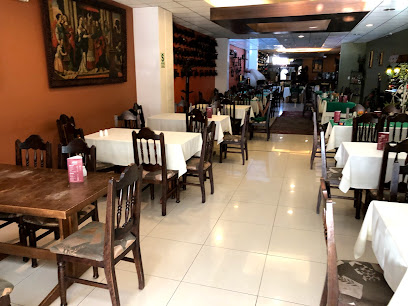
Cafe Bar de la Casa del corregidor
Discover culinary bliss at Cafe Bar de la Casa del Corregidor in Puno - an inviting restaurant offering exquisite brunches and specialty coffee.

Tulipans Restaurant
Discover the flavors of Peru at Tulipans Restaurant - where local ingredients meet international cuisine in a cozy setting.

La Estancia Grill
Experience authentic Peruvian cuisine at La Estancia Grill in Puno - where every meal tells a story.

Balcones de Puno
Experience authentic Peruvian cuisine with stunning views at Balcones de Puno - A culinary delight overlooking Lake Titicaca.

El Caserio De Huaje
Experience authentic Peruvian cuisine at El Caserio De Huaje, a charming restaurant in Puno offering traditional dishes and local flavors.

Loving Hut Vegan
Discover Loving Hut Vegan in Puno - where delicious plant-based meals meet sustainable dining in a cozy atmosphere.

La Hacienda
Experience the best pizzas in Puno at La Hacienda – where fresh ingredients meet traditional recipes for an unforgettable meal.
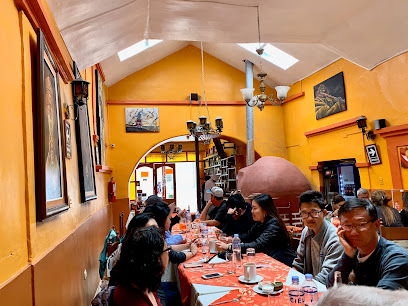
Quinta Restaurant Arenas del Lago
Experience authentic Peruvian flavors at Quinta Restaurant Arenas del Lago in Puno – where every meal tells a story.

Restaurant Sombreritos
Experience authentic Peruvian cuisine at Restaurant Sombreritos in Puno – where tradition meets taste in a cozy setting.

La Choza de Oscar
Experience authentic Peruvian flavors at La Choza de Oscar in Puno – renowned for succulent rotisserie chicken and vibrant local ambiance.

Los Uros
Discover Los Uros: A Floating Paradise on Lake Titicaca where Culture Meets Nature in Stunning Harmony.

La Hosteria
Savor authentic Peruvian flavors at La Hosteria in Puno – where culinary tradition meets warm hospitality.

incabar
Experience the best of Peruvian cuisine at Incabar in Puno – where tradition meets taste in every dish.

Markets, malls and hidden boutiques
Plaza Mayor de Puno
Explore the lively Plaza Mayor de Puno, a cultural gem surrounded by stunning architecture and local flavors in the heart of Peru.

Real Plaza Juliaca
Experience the best shopping, dining, and entertainment at Real Plaza Juliaca, the ultimate destination for visitors in Peru.

Puno Plaza Vea
Discover local flavors and unique products at Puno Plaza Vea, a vibrant hypermarket for a true Peruvian shopping experience.

Cafe Bar de la Casa del corregidor
Discover the perfect blend of local flavors and cozy ambiance at Café Bar de la Casa del Corregidor in Puno, a must-visit culinary destination.

Cachina Puno
Discover Cachina Puno, a vibrant clothing store showcasing unique Peruvian fashion and a must-visit for any tourist in Puno.

CENTRO COMERCIAL QORI WASI
Explore Centro Comercial Qori Wasi, Puno's premier shopping destination for local crafts, international brands, and delightful dining experiences.

Valentina Store
Explore Valentina Store in Juliaca for unique Peruvian gifts, handicrafts, and souvenirs that capture the essence of local culture.

Platanitos Real Plaza Juliaca
Explore Platanitos Real Plaza Juliaca for trendy footwear and stylish accessories in the heart of Puno, Peru.
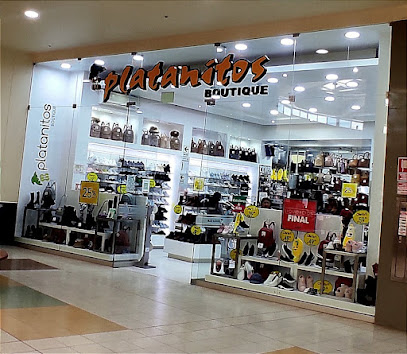
Tienda Usagii
Explore authentic Peruvian crafts at Tienda Usagii, a cultural gem in Puno where shopping meets tradition.

Candelaria Puno Peru
Experience the vibrant shopping scene at Candelaria Mall in Puno, Peru, where local culture meets modern retail and delicious dining.

MA Personalizado
Explore MA Personalizado in Juliaca for unique Peruvian souvenirs and gifts that reflect local artistry and culture.

Genuinos Art
Explore Genuinos Art in Puno for authentic Peruvian handicrafts and unique costume jewelry treasures, perfect for any collector or traveler.

El Bazar de Charly's
Experience the essence of Peru at El Bazar de Charly's, where unique home goods and local craftsmanship meet.
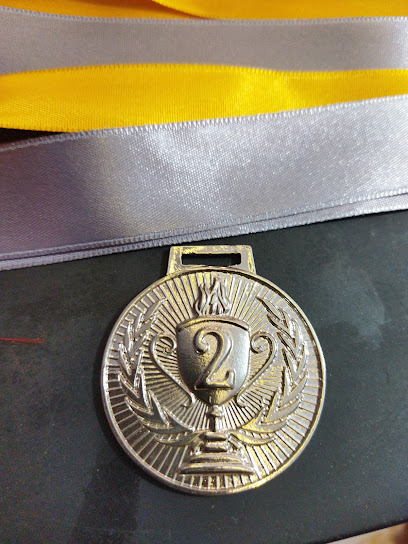
CREATIVE MYLG
Discover unique gifts and local crafts at Creative Mylg, a charming gift shop in Juliaca showcasing Peru's rich culture.

Sumaq Ruway
Discover authentic Peruvian fashion and cultural treasures at Sumaq Ruway, a must-visit clothing store in the heart of Puno.

Essential bars & hidden hideouts
Remix Pizzería Resto Café Bar
Experience gourmet pizza and innovative cocktails at Remix Pizzería Resto Café Bar in Puno, Peru, where local flavor meets vibrant atmosphere.
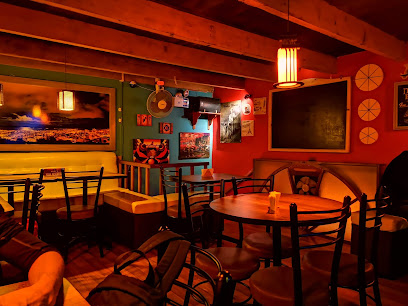
incabar
Discover authentic Peruvian flavors and a warm atmosphere at Incabar in Puno, the perfect dining experience for tourists.

Positive Rock 'n Reggae
Discover the heart of Puno's nightlife at Positive Rock 'n Reggae, where live music and vibrant culture come together in a vibrant bar experience.

Pacha Mixology Coffee Molecular Bar
Explore Puno's Pacha Mixology Coffee Molecular Bar, where innovative drinks and gourmet coffee combine for a unique taste experience.

Kamizaraky Rock
Discover the vibrant flavors of Kamizaraky Rock, a grill paradise in Puno, Peru, where culinary delights and authentic experiences await.

Alma Bar Restaurante
Discover the vibrant flavors of Peru at Alma Bar Restaurante, where every dish tells a story of tradition and passion.

Kusillos Bar
Discover the vibrant nightlife at Kusillos Bar in Puno, where local culture meets refreshing cocktails and lively entertainment.

Ibiza Karaoke
Experience the vibrant nightlife of Puno at Ibiza Karaoke, where singing and fun come together in a lively atmosphere.

El Retorno Restobar
Experience the vibrant flavors of Puno at El Retorno Restobar, a gastropub that offers a delightful mix of local cuisine and craft beverages.

Taquile
Explore Taquile Island: A cultural gem on Lake Titicaca, where tradition and breathtaking views await.
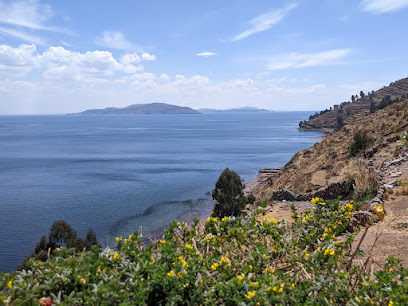
Tucandelas Pizzeria Cafe Bar
Discover the warmth of Puno at Tucandelas Pizzeria Cafe Bar, where delicious pizzas meet a cozy café atmosphere.

Pankara Bar
Discover the lively Pankara Bar in Puno, Peru, where vibrant cocktails meet a welcoming atmosphere in the heart of the city.

PERU BAR Puno
Discover the vibrant nightlife of Puno at Peru Bar, where traditional drinks and lively music create an unforgettable experience.

Bardeli
Experience the vibrant nightlife of Puno at Bardeli, where locals gather for drinks, fun, and unforgettable memories.

BOHEMIA BAR
Discover the vibrant nightlife at Bohemia Bar in Puno, where local flavors meet a lively atmosphere for an unforgettable experience.
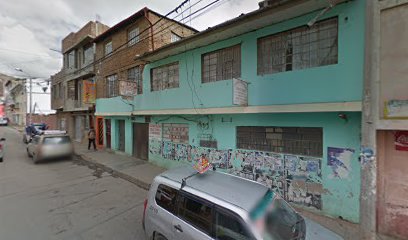
Local Phrases about Puno Region
-
- HelloQonichiwa
[koh-nee-chi-wa] - GoodbyeNokhampa
[no-kham-pa] - YesArí
[ah-ree] - NoMani
[mah-nee] - Please/You're welcomeImamanta
[ee-ma-man-ta] - Thank youSulpayki
[sul-pai-kee] - Excuse me/SorryPaktachan
[pak-ta-chan] - How are you?Imataq?
[ee-ma-tak] - Fine. And you?Allin. Qan?
[al-yeen. khan] - Do you speak English?Inglis rimankichu?
[een-glees ree-man-kee-chu] - I don't understandMana rimaqmi
[mah-na ree-mak-mee]
- HelloQonichiwa
-
- I'd like to see the menu, pleaseMenu ruwanki, kaypi
[men-oo roo-wan-kee, kai-pee] - I don't eat meatRikurimushkani
[ree-koo-ree-moosh-kah-nee] - Cheers!Ayniqam!
[ai-nee-kam] - I would like to pay, pleaseTikpuni, kaypi
[teek-poo-nee, kai-pee]
- I'd like to see the menu, pleaseMenu ruwanki, kaypi
-
- Help!Yawarachiy!
[ya-wa-ra-chee] - Go away!Qaway!
[kwa-way] - Call the Police!Pulispi llamanki!
[poo-lees-pee yam-an-kee] - Call a doctor!Yachachiq llamanki!
[ya-cha-cheek yam-an-kee] - I'm lostPierdikachiy
[pyair-dee-ka-chee] - I'm illManan kani
[mah-nan ka-nee]
- Help!Yawarachiy!
-
- I'd like to buy...Kayanichikuni...
[kai-ya-nee-chee-koo-nee] - I'm just lookingSayachiykani
[sa-ya-chee-kah-nee] - How much is it?Imataq kay?
[ee-ma-tak kai] - That's too expensiveChaypi kallpana
[chai-pee kahl-pana] - Can you lower the price?Kikinaykiki?
[kee-kee-nai-kee-kee]
- I'd like to buy...Kayanichikuni...
-
- What time is it?Imataq chay?
[ee-ma-tak chai] - It's one o'clockJunku rikur
[hoon-koo ree-kur] - Half past (10)Iskay pata (10)
[ees-kai pa-ta (10)] - MorningPukllay
[pook-yay] - AfternoonChaski
[chas-kee] - EveningTuta
[too-ta] - YesterdayHuk p'unchay
[hook poon-chai] - TodayKay p'unchay
[kai poon-chai] - TomorrowKilla p'unchay
[kee-ya poon-chai] - 1Huk
[hook] - 2Iskay
[ees-kai] - 3Kimsa
[keem-sa] - 4Tawa
[ta-wa] - 5Pichqa
[peech-ka] - 6Suqta
[sook-ta] - 7Qanchis
[khan-chees] - 8Pusaq
[poo-sak] - 9Isqun
[ees-koon] - 10Chunka
[choon-ka]
- What time is it?Imataq chay?
-
- Where's a/the...?Maypi...
[mai-pee] - What's the address?Imataq wasi?
[ee-ma-tak wah-see] - Can you show me (on the map)?Qaypimuykiki?
[kai-pee-mooi-kee-kee] - When's the next (bus)?Maypimanta qhipa (bus)?
[mai-pee-man-ta kee-pa (bus)] - A ticket (to ....)Tikiti (ka ...)
[tee-kee-tee (ka ...)]
- Where's a/the...?Maypi...
History of Puno Region
-
The Puno Region is rich in archaeological evidence of pre-Incan civilizations such as the Pukara and Tiahuanaco cultures. The Pukara civilization, which flourished around 200 BC to 300 AD, is known for its impressive stone carvings and monolithic structures. The Tiahuanaco culture, which dates back to approximately 400 AD to 1000 AD, left behind significant ruins at sites like the Kalasasaya Temple and the Akapana Pyramid.
-
The Inca Empire expanded into the Puno Region in the 15th century, integrating it into their vast network of territories. The Incas were known for their sophisticated agricultural practices, which included terrace farming along the slopes of Lake Titicaca. The region became an important hub for the Incas, providing resources and serving as a strategic location.
-
The Spanish conquest in the 16th century dramatically altered the course of history in the Puno Region. The Spanish conquerors, led by Francisco Pizarro, subdued the Incan Empire, bringing with them new governance, religion, and social structures. The introduction of Catholicism led to the construction of many churches, some of which still stand today.
-
During the colonial era, the Puno Region became an important center for silver mining. The extraction of silver from mines like those in Laykakota fueled the Spanish economy. Indigenous labor was heavily exploited under the encomienda and mita systems, leading to significant social and demographic changes.
-
In the late 18th century, the Puno Region was a focal point in the rebellion led by Tupac Amaru II, an indigenous leader who sought to overthrow Spanish rule. The rebellion, which began in 1780, spread across the Andes and inspired future movements for independence despite its ultimate failure.
-
Following Peru's independence from Spain in 1821, the Puno Region continued to play a vital role in the country's development. The region saw the rise of new political and social structures as it adapted to the changes brought by independence. It also became a significant agricultural and pastoral area.
-
Today, the Puno Region is renowned for its vibrant cultural heritage, particularly its festivals. The most famous is the Festival of the Virgin of Candelaria, which showcases traditional music, dance, and elaborate costumes. The region's unique blend of indigenous and colonial influences continues to make it a captivating destination for visitors.
Puno Region Essentials
-
Puno Region is accessible via multiple routes. The primary gateway to Puno is the Inca Manco Cápac International Airport in Juliaca, which is approximately 44 kilometers from Puno city. From Lima, direct flights to Juliaca are available and typically take around 1.5 hours. Alternatively, you can travel by bus from major Peruvian cities like Cusco and Arequipa to Puno, with travel times ranging from 7 to 10 hours. Train services, such as the PeruRail Titicaca Train, offer a scenic but longer route from Cusco to Puno.
-
Within Puno city, transportation options include taxis, mototaxis (three-wheeled vehicles), and public buses. Taxis are relatively inexpensive and can be hailed on the street or booked through apps. For a more local experience, mototaxis are widely used for short distances. Public buses and colectivos (shared minibuses) are available for traveling to nearby towns and villages. Renting a car is possible but not recommended due to challenging road conditions and local driving habits.
-
The official currency in Peru is the Peruvian Sol (PEN). Credit cards are accepted in most hotels, restaurants, and larger shops in Puno city, but smaller establishments and rural areas may only accept cash. ATMs are widely available in Puno city, especially around the Plaza de Armas. It is advisable to carry small denominations of cash for convenience. Currency exchange services are available at banks and authorized exchange bureaus.
-
Puno Region is generally safe for tourists, but standard precautions should be taken. Petty crimes such as pickpocketing and bag snatching can occur, particularly in crowded areas like markets and bus terminals. Avoid walking alone at night in poorly lit areas and always keep an eye on your belongings. Specific neighborhoods with higher crime rates include the outskirts of Juliaca. It’s advisable to use reputable taxi services and avoid displaying valuable items.
-
In case of an emergency, dial 105 for police assistance or 116 for medical emergencies. The main hospital in Puno city is Hospital Regional Manuel Núñez Butrón. Pharmacies are available throughout the city for minor health issues. It is strongly recommended to have travel insurance that covers medical emergencies. For lost or stolen items, report to the local police station and your embassy if necessary.
-
Fashion: Do dress in layers as the weather can be unpredictable. Avoid wearing flashy jewelry. Religion: Do respect local customs and traditions, particularly when visiting churches and indigenous communities. Remove hats and sunglasses before entering religious sites. Public Transport: Do be polite and give up your seat for elderly passengers. Do not eat or drink on public transport. Greetings: Do greet people with a handshake or a simple 'Buenos días' (Good morning). Avoid overly familiar gestures. Eating & Drinking: Do try local dishes such as ceviche and cuy (guinea pig). Do not refuse food or drink offerings as it is considered impolite.
-
To experience Puno Region like a local, visit the bustling markets such as Mercado Central and Feria Sabatina. Engage with local artisans and purchase traditional crafts. Take a boat tour to the Uros Floating Islands on Lake Titicaca for a unique cultural experience. Participate in local festivals and events like the Fiesta de la Candelaria, which showcases traditional music and dance. Dining at local picanterías (traditional eateries) will offer an authentic taste of regional cuisine.
Trending Landmarks in Puno Region
-
Plaza Mayor de Puno
-
Pino Park
-
Mirador Puma de Puno
-
Arco Deustua
-
Casa Andina Premium Puno
-
Casa Andina Standard Puno
-
Puno Cathedral
-
Coca Museum & Custumes
-
Complejo Turístico Flotante UROS TITICACA KURMI LAGO TITICACA PERÚ
-
Yavari
-
Islas de Los Uros
-
Faro Titicaca Puno
-
BALCON DEL CONDE DE LEMOS
-
Pichurata Jankolaka
Nearby Cities to Puno Region
-
Things To Do in Copacabana
-
Things To Do in Arequipa
-
Things To Do in La Paz
-
Things To Do in Cusco
-
Things To Do in Tacna
-
Things To Do in Machu Picchu
-
Things To Do in Arica
-
Things To Do in Cochabamba
-
Things To Do in Ayacucho
-
Things To Do in Iquique
-
Things To Do in Ica
-
Things To Do in Huancayo
-
Things To Do in Sucre
-
Things To Do in Potosi
-
Things To Do in Uyuni













